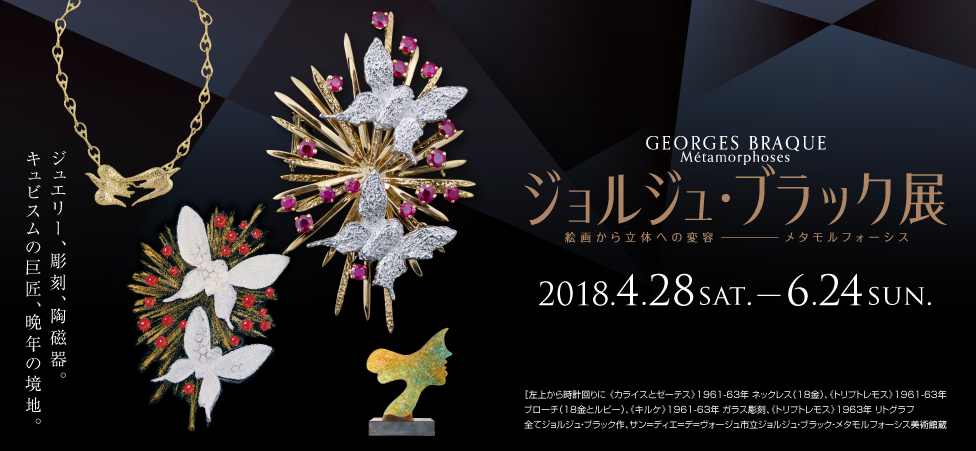GEORGES BRAQUE Métamorphoses
General Information
- Dates
- Apr. 28 – Jun. 24, 2018
- Hours
- 10 a.m. – 6 p.m. (Admittance until 5:30 p.m.)
- Closed
- Closed: Wednesdays (Except on May 2)
- Admission
- Adults: ¥1,000
Students (College): ¥700
Students (High / Middle school): ¥500
Visitors aged 65 or over carrying proof of age: ¥900
Groups of 20 or more will receive a ¥100 discount per person (not including those aged 65 or over).
Admission is free for children in primary school and younger.
Admission is free for disability passbook holders and up to one accompanying adult.Admission is free on May 18, which falls on International Museum Day.
- Organizers
- Panasonic Shiodome Museum, The Asahi Shimbun
- Support
- Embassy of France in Tokyo / Institut français du Japon, Japan Jewellery Designers Association, Japan Jewellery Association, Minato Ward Board of Education
- Planning Cooperation
- White International Relations Co.
Exhibition overview
Georges Braque (1882 – 1963) and Pablo Picasso, the founders of cubism, revolutionized art in the early 20th century by breaking up three-dimensional objects into parts and reassembling them such that the object’s entirety could be presented on a two-dimensional surface. This exhibition marks the first in Japan to focus entirely on Métamorphoses, a series of sculptures, ceramic works, jewelry, and other three-dimensional works of art that Braque adapted from his paintings in his late period. The series embodies Braque’s lifelong mission to bring beauty to every creative medium. Of particular note are the jewelry works that André Malraux, former French Minister of Cultural Affairs, declared in 1963 to be “Braque’s apotheosis.” There is a sublime quality to these items that conveys Braque’s fascination with the magnificence of precious stones and metals, as well as his tireless pursuit of beauty. In addition to Métamorphoses, the exhibition will display a few valuable works—such as early landscapes, as well as works from Braque’s transitional period from cubism to still life—that demonstrate the stylistic changes in Braque’s work over the course of his life and offer insight into his artistic evolution. Many of the works are on loan from the Musée Georges Braque Métamorphoses in Saint-Dié-des-Vosges, France.






